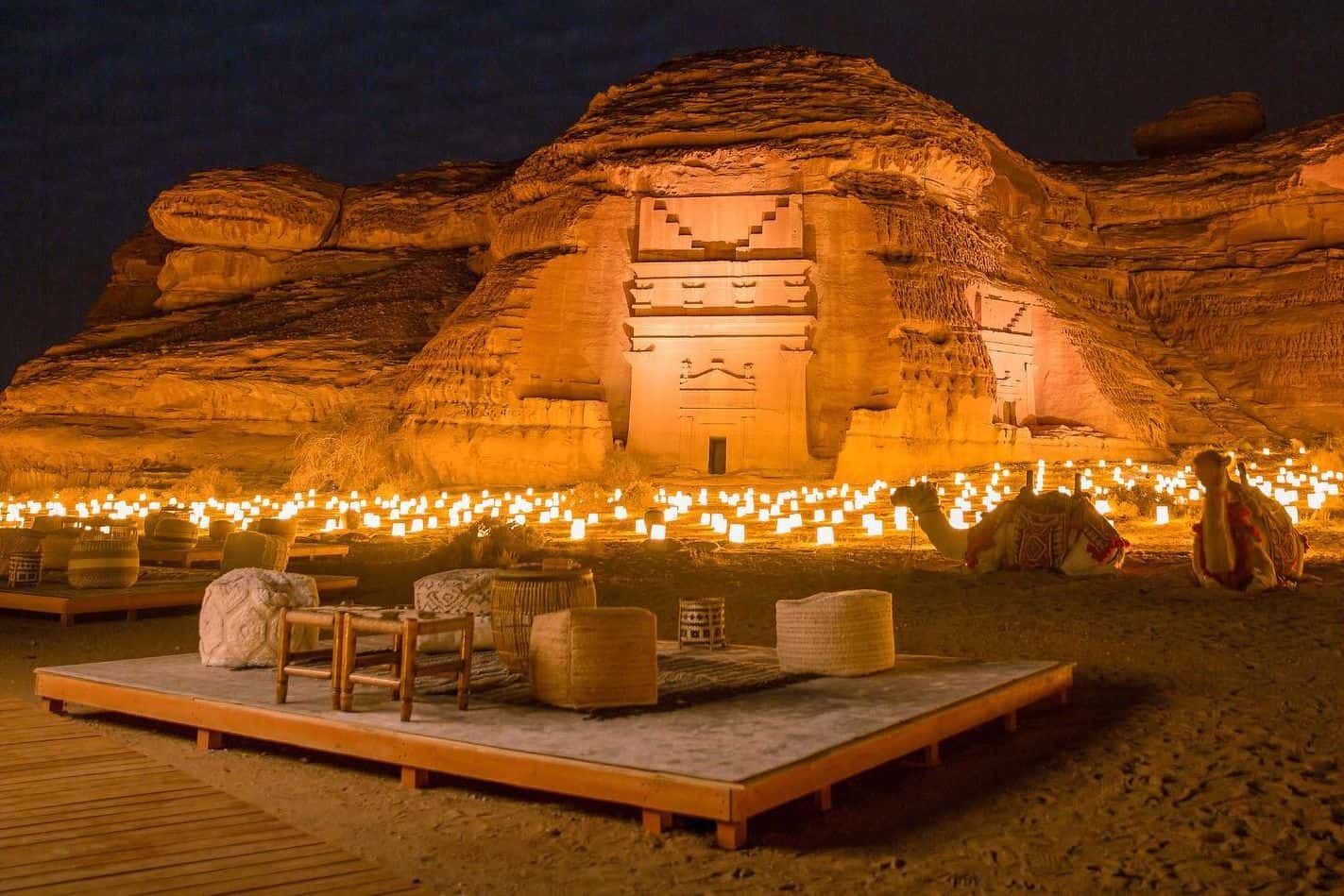RIYADH, SAUDI ARABIA — With its rich cultural heritage, breathtaking natural landscapes, and ambitious development projects, Saudi Arabia is poised to take the world stage as a leading global tourism destination.
Recognizing the enormous potential of tourism as a driver of economic growth, job creation, and cultural exchange, the Kingdom has made significant strides in leveraging its tourism sector for transformation and diversification away from oil and gas dependence.
Tracy Lanza, Group Head of Global Brand Development at RSG, highlights the Kingdom’s impressive tourism statistics, stating, “In 2022, the Kingdom welcomed 16.6 million visitors, making it the most visited country in the Middle East.”
The first quarter of 2023 alone witnessed a record-breaking performance, with 7.8 million tourists visiting Saudi Arabia, marking a remarkable 64 percent growth compared to the same period in 2019. Furthermore, Saudi Arabia aims to attract 100 million annual visits by 2030, generating one million additional jobs and increasing the tourism sector’s contribution to GDP from 3 percent to 10 percent.
According to Patrick Samaha, Principal at Kearney Middle East & Africa, the Kingdom possesses all the necessary ingredients to become a leading global tourism destination by 2030. These factors include diverse and unique tourism offerings such as heritage and cultural tourism, adventure tourism, eco-tourism, and luxury tourism.
Iconic projects such as NEOM, the Red Sea, Qiddiya, and Diriyah contribute to the Kingdom’s allure. Additionally, Saudi Arabia boasts excellent hospitality infrastructure, advanced air, sea, and land connectivity, and a commitment to the sustainable treatment of fragile ecosystems.
The development of tourism will not only contribute to the Kingdom’s economic growth but also enhance its soft power on the global stage by promoting bilateral agreements and showcasing its cultural richness.

The importance of tourism in Saudi Arabia can be attributed to four main factors, as outlined by Samaha. Firstly, tourism serves as a crucial component of the Kingdom’s economic diversification strategy, aiming to achieve a 10 percent GDP contribution from tourism by 2030, aligning with the global average.
Secondly, the tourism sector acts as a catalyst for job creation, accounting for approximately 10 percent of all jobs globally and 25 percent of new job opportunities, according to the World Travel and Tourism Council.
Thirdly, tourism helps showcase the Kingdom’s abundant cultural, natural, and historical treasures, including destinations like Al Ula, Farasan, Diriyah, as well as remarkable projects such as the Red Sea and NEOM.
Finally, tourism can support sustainable development by promoting eco-tourism in natural reserves and adhering to international standards for conservation.
While the future of Saudi Arabia’s tourism sector looks promising, there are notable challenges to address. Overcoming the perception of Saudi Arabia as a closed-off and conservative destination poses a significant hurdle.
Efforts must be made to attract a diverse range of tourists. Additionally, seasonality remains a challenge due to the warm climate during the summer months when international visitors often prefer milder destinations.
To mitigate this, the Kingdom is branding high-altitude destinations like Abha and Taif as summer getaways. Moreover, recent cultural and societal changes may pose challenges for citizens, particularly older generations, as they adapt to a rapidly transforming society.
However, the tourism industry in Saudi Arabia also presents significant opportunities. The country has made it easier for tourists to obtain visas, offering e-visas that can be acquired online within minutes. Hosting major events such as Formula 1 races and the Riyadh Season attracts global visitors, while MICE events generate substantial revenue.
The opening of new source markets, like China, provides an opportunity to target new tourists seeking unique and unexplored destinations. The expansion of religious sites around the two Holy Mosques offers religious travelers an extended stay.
Additionally, Saudi Arabia’s commitment to Vision 2030 and its wide range of initiatives involving multiple stakeholders demonstrates a unified effort toward a common goal.
“These opportunities have the potential to turn Saudi Arabia into a major tourism destination in the coming years, especially given that the country is still in its early stages of development and the government’s commitment to developing the tourism industry,” concluded Samaha.
As Saudi Arabia continues its journey toward global tourism prominence, the concerted efforts, investments, and commitment to excellence are expected to yield fruitful outcomes, propelling the Kingdom to the forefront of the world’s most sought-after destinations.

